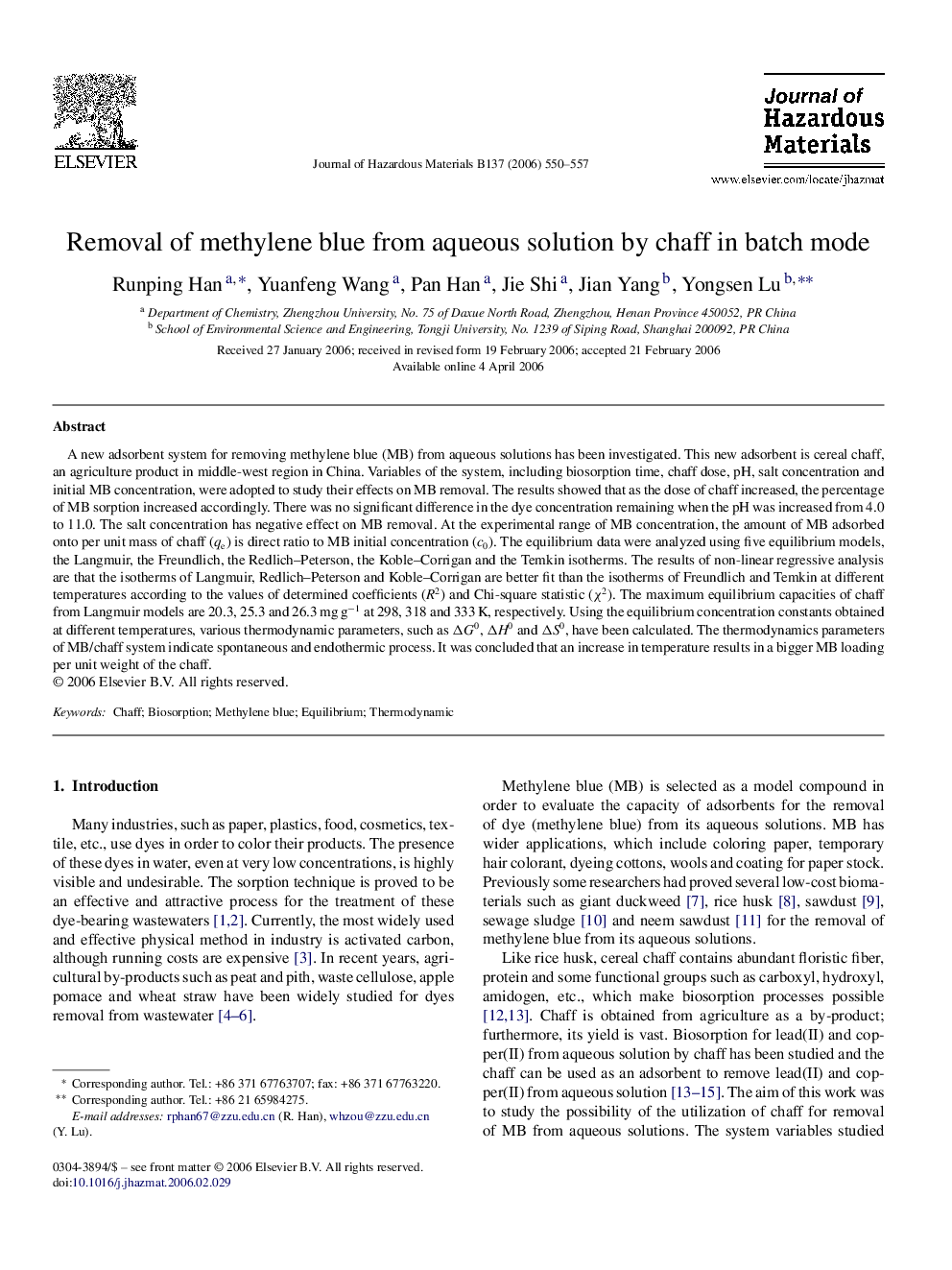| Article ID | Journal | Published Year | Pages | File Type |
|---|---|---|---|---|
| 585483 | Journal of Hazardous Materials | 2006 | 8 Pages |
Abstract
A new adsorbent system for removing methylene blue (MB) from aqueous solutions has been investigated. This new adsorbent is cereal chaff, an agriculture product in middle-west region in China. Variables of the system, including biosorption time, chaff dose, pH, salt concentration and initial MB concentration, were adopted to study their effects on MB removal. The results showed that as the dose of chaff increased, the percentage of MB sorption increased accordingly. There was no significant difference in the dye concentration remaining when the pH was increased from 4.0 to 11.0. The salt concentration has negative effect on MB removal. At the experimental range of MB concentration, the amount of MB adsorbed onto per unit mass of chaff (qe) is direct ratio to MB initial concentration (c0). The equilibrium data were analyzed using five equilibrium models, the Langmuir, the Freundlich, the Redlich-Peterson, the Koble-Corrigan and the Temkin isotherms. The results of non-linear regressive analysis are that the isotherms of Langmuir, Redlich-Peterson and Koble-Corrigan are better fit than the isotherms of Freundlich and Temkin at different temperatures according to the values of determined coefficients (R2) and Chi-square statistic (Ï2). The maximum equilibrium capacities of chaff from Langmuir models are 20.3, 25.3 and 26.3 mg gâ1 at 298, 318 and 333 K, respectively. Using the equilibrium concentration constants obtained at different temperatures, various thermodynamic parameters, such as ÎG0, ÎH0 and ÎS0, have been calculated. The thermodynamics parameters of MB/chaff system indicate spontaneous and endothermic process. It was concluded that an increase in temperature results in a bigger MB loading per unit weight of the chaff.
Related Topics
Physical Sciences and Engineering
Chemical Engineering
Chemical Health and Safety
Authors
Runping Han, Yuanfeng Wang, Pan Han, Jie Shi, Jian Yang, Yongsen Lu,
